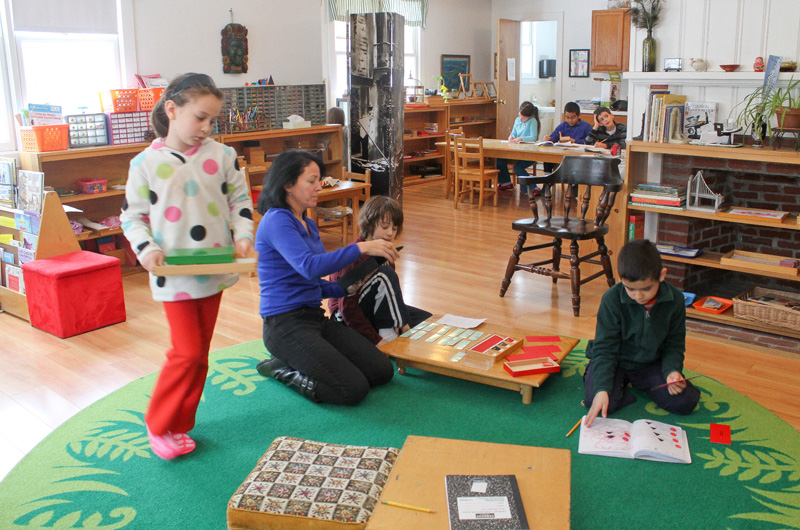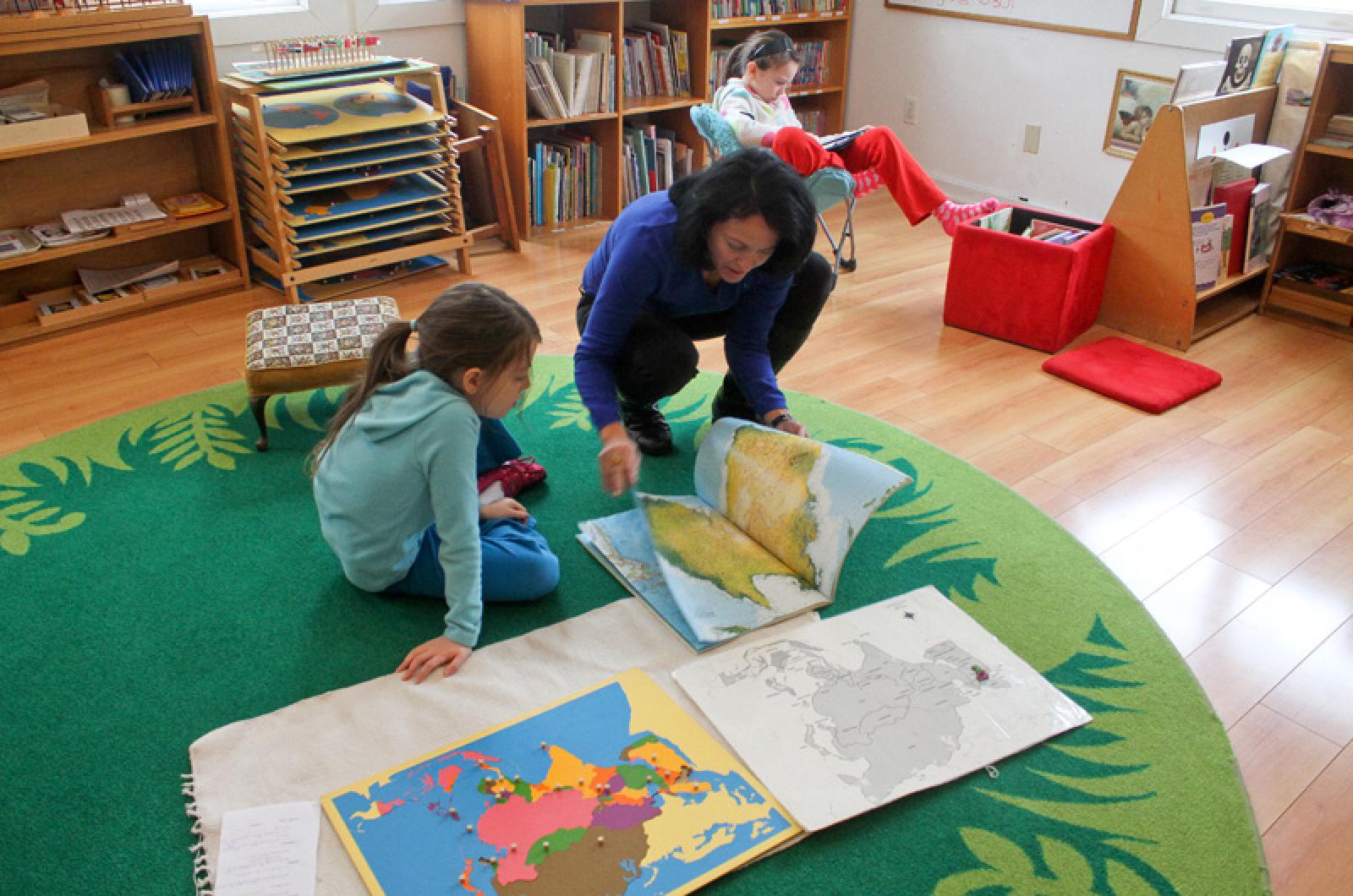The Vineyard Montessori School is expanding its curriculum, with plans in place to add a fifth grade next year. And administrators and teachers say that based on continued parent and student interest, sixth grade is likely to follow.

Last year, in response to parent inquiries, the school put in place a fourth grade program for two students who had reached the end point of their Montessori education as offered by the Vineyard school. At that point the school had programs for preschool through third grade. The Montessori school is the only private independent elementary school on the Island. It was founded in the 1970s and has been in its current home in Vineyard Haven since 1986.
“They said, you know, we’d really like to stay,” head of school Deborah Jernegan said on Tuesday. Elementary teacher Irene Wendt worked on extensions of third grade work for the students and collaborated with fellow teacher Tyrene Johnston, who works with primary (preschool to kindergarten) students but has Montessori training in upper elementary (grades four through six).
Mrs. Wendt will attend an extensive upper elementary training session at the Seacoast Center for Education in Warren, Me., this summer. Educators from other Montessori schools off-Island, including the Inly School in Scituate, which offers programs through eighth grade, have visited to offer advice on the new initiative.
“It was good to have [Inly] here just to get some feedback about how to run a quality program, what sort of things you need,” Mrs. Wendt said.
There are nine students in the elementary program this year (the school has an total enrollment of 46) and Mrs. Jernegan expects 12 next year. One student commutes from Falmouth; the nearest Montessori school on the Cape is in Bourne.
“Her older siblings came here and her parents wanted her to have the same experience,” Mrs. Jernegan said. The elementary classroom is equipped for a maximum of 12 students.
“The reason why most of these kids are here is because parents want a smaller classroom setting and more hands-on learning,” Mrs. Wendt said. She first became involved with the school when her daughter, now in seventh grade at the Oak Bluffs School, was in the primary program. After receiving a master’s degree in early childhood education from Wheelock College, Mrs. Wendt completed additional Montessori training.
The Montessori method was developed by Maria Montessori in the late 19th century and brought to the United States in 1911. It focuses on independent learning and is based on models of child development. Multi-age classrooms are a part of the method, as older students can help younger ones learn new lessons, and in doing so reinforce their own knowledge. Tactile materials are prevalent throughout the curriculum.
In Chris Rasmussen’s primary classroom last week, two boys learned about counting and skip counting (five, 10, 15, 20, for example) by labeling long chains of glass beads, each chain a different color. In the elementary classroom, the same bead chains hung next to squares and cubes made of same-colored beads, to provide a physical representation of 25 as the square of five, and 125 as its cube.
“So it’s a familiar lesson,” Mrs. Rasmussen said. “It goes all the way up.”
Mrs. Jernegan described the primary classroom lessons as scaffolding for the elementary lessons. The concepts transfer from one level to another via the recognizable materials.
In order to put a fifth grade curriculum in place, additional math and geometry materials will be needed. The fourth graders are learning geometry right now, working on circle area and prism volume, and will begin pre-algebra concepts next year.
Mrs. Wendt said there will also be more of a focus on outings and community interaction for the students, which bolster the research projects that kids work on.

“That’s very important in the elementary program,” she said. Last year, the students spent months working on a research project called Imaginary Island. They studied latitude, longitude, navigation, and “solidified all of the geography terms,” before choosing a location on the globe and creating an island there from scratch, writing up a report about what its climate, geographic features, and animal life would be like before creating a model island out of clay.
“I would say geography is a big part of the Montessori curriculum at a young age,” Mrs. Wendt said. Students use puzzle maps to learn where countries are located (on Tuesday, one third grader completed an Asia map) and are then encouraged to research specific nations. The school’s proximity to the Vineyard Haven Library helps with the research, as does the classroom library and a reference iPad.
All the elementary students enrolled have been attending the school since they were in the primary classroom.
“So their foundation is incredibly strong,” Mrs. Jernegan said.
With the addition of new grade levels, the students can continue to build.
An earlier version of this story incorrectly reported the number of students currently in the Vineyard Montessori School elementary program. The story has been updated.









Comments
Comment policy »